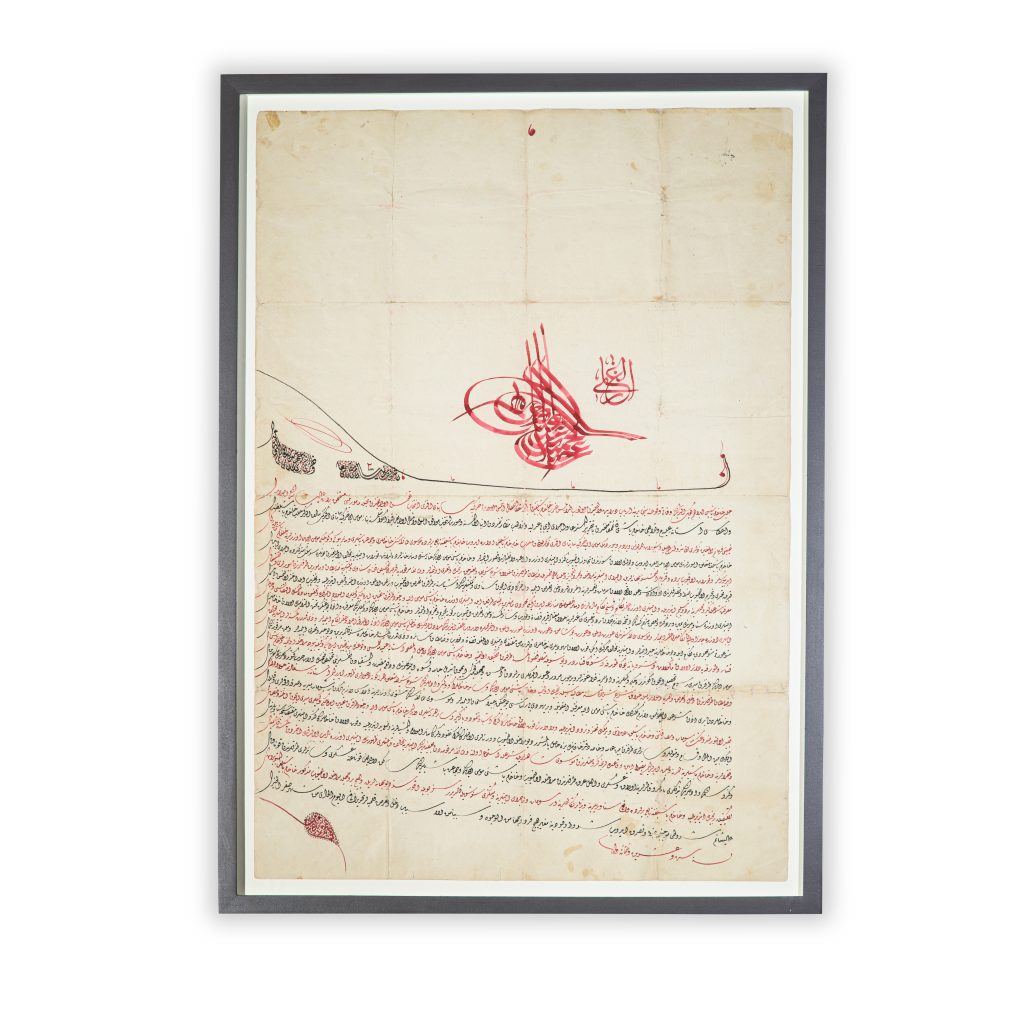Firman (Royal Decree) Appointing Hakham Hizkiya Shabtai
Chief Rabbi of Aleppo
Aleppo, Syria, 1908
Ink on paper
Original at the Ben Mordechai collection
The firman was produced by the Turkish Sultan Abdul Hamid II. Along with appointing Hizkiya Shabtai Hakham Bashi, who represents the community before the government, the document grants the Jewish community religious freedom and protects its institutions.
Must Know
This document appoints Rabbi Hizkiya Shabtai as the head Rabbi of the Jewish community of Aleppo in Syria, in addition, also being the Hakham Bashi of Tripoli in Libya and Jaffa in Israel. he was also a member of the Rabbinical Council of Israel.
Hakaham Bashi, which translates to ‘the head of the wise’, was the title given to the head of the Jewish communities at the time of the Ottoman Empire. Their role was usually similar to that of a Rabbi as a religious leader, yet also included being a spokesperson for the Jewish people in the political sphere. The Hakaham Bashi was recognised as the head and correspondent of the Jews and was thus given a royal decree.
More Info
The name Hakaham Bashi comes from the word Hakham meaning wise man or scholar and başı meanings head in Turkish. The word Hakham was often used to describe Rabbis. The concept and usage of the Hakaham Bashi was established by Ottoman Sultan Mehmet II as part of his desire to govern diverse communities within the Ottoman Empire according to their customs and cultures. The Ottoman Empire was large in size and spanned across multiple states, it encompassed a very big part of the diaspora compared to other Empires in history and religion was considered a predominate aspect of a communities’ ‘national’ identity within the Empire. The role of Hakaham Bashi was terminated with the appointment of specific Ashkenazi and Sephardi Rabbis around 1921.
Rabbi Hizkiya Shabtai, aside from being the Hakaham Bashi in several cities, had other important roles that made him into the Jewish leader that he was. he was a meshulach or shadar, an acronym for Shelichei DeBabonan in hebrew, where he was a rabbinical representative sent to collect charity funds. Additionally he served as an Av Beit Din, translating to chief of justice from hebrew, which was known as the ‘master of the court’ within the Sanhedrin assemblies of the Jewish communities during the Second Temple period. Already at the age of 13, HIzkiya dedicated his life to the study of the Torah studying at a Jewish educational institution (yeshiva) with Rabbi Yitzhak Molcho. פירמאן מגנזי קדם

